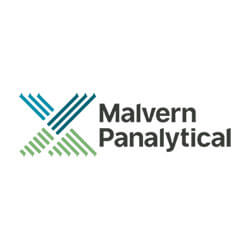Benefit of laser diffraction and spatial filter technique for dry and wet granulation
Across the pharmaceutical, food and chemical industries, granulation processes are used to convert light, fine powders into larger, more dense granules, to make fast-dissolving drinks, optimized blends for compression tableting and granules for waste water absorption applications, for example. Also in the manufacture of catalysts. Whether granulation is dry or wet the goal is to produce granules that fulfill the requirements of subsequent processing steps or end use. Particle size is often a defining characteristic. This paper considers various granulation processes and the use of real-time particle size measurement in their optimization, focusing on two different sizing methods: laser diffraction and the spatial filter technique (SFT). Case studies illustrate the potential benefits associated with continuous particle size measurement.Why include a granulation step?
Handling fine powders can be problematic, with materials in the sub-10 micron range being especially challenging. The strong forces of attraction between fine particles lead to high cohesivity and poor flowability, compromising efficient manufacture and use. From the point of view of safety such materials can also present a significant dust hazard. The granulation of fine powders, alone or in a blend, tackles these issues, potentially eliminating any dust hazard, improving flowability and enabling the close control of:- Wettability
- Bulk density
- Product appearance
- Compressibility
- Abrasiveness
- Solubility
- Drying properties
- Absorptive capacity
Company profile
Malvern Panalytical technologies are used by scientists and engineers in a wide range of industries and organizations to solve the challenges associated with maximizing productivity, developing better quality products and getting them to market faster. Our mission is to create superior, customer-focused solutions and services to deliver tangible economic impact through chemical, physical and structural analysis of materials.
Underpinned by extensive industry knowledge and technical and applications expertise, Malvern Panalytical instruments help users better understand a wide variety of materials, from proteins and polymers to metals and building materials. Our technologies enable the measurement of parameters such as particle size, shape and zeta potential, biomolecular interactions and stability, rheological properties, elemental concentrations and crystallographic structure. Highly reliable and robust characterization of these properties is fundamental to predicting how a product will behave during use, to optimizing its performance and achieving manufacturing excellence.
Markets Served
Malvern Panalytical products and solutions for Discovery, Research & Development, Process Control, and Product Quality Assurance are sold primarily into four market sectors: Pharma/Food/Bio, Metals/Mining/Minerals, Chemicals/ Petrochemicals, and Advanced Materials sector which includes many academic and government research facilities around the world.
Company Background
Malvern Panalytical was formed by the merger of the businesses Malvern Instruments (Malvern, UK) and PANalytical, including ASD and Claisse (Almelo, the Netherlands) on 1st January 2017, and employs over 2,000 people worldwide. With R&D and manufacturing sites in North America, Europe and China, and a global sales and service presence, Malvern Panalytical provides unrivalled levels of customer support.
Malvern Panalytical is a leader in the materials characterization market, developing expert analytical solutions which deliver superior actionable insight.
www.malvern.com
severine.michel@malvern.com





